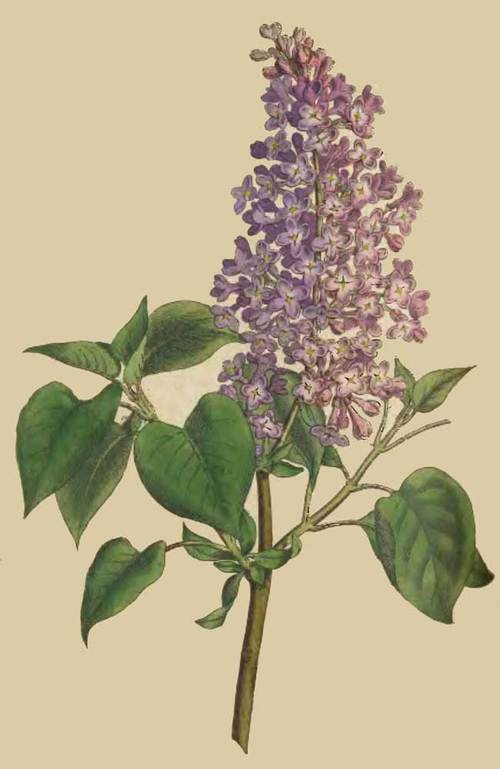Syringa vulgaris
Common name: common lilac
Family: Oleaceae
Leaf: Glaucous, opposite, pointed-ovate to heart-shaped leaves (2-5" long) are dark gray-green to blue green. No fall colour.
Flowers: mid to late spring bloom (May) of very fragrant, tubular, 4-lobed, lilac to purple flowers (each 1/3" long) which bloom in large conical panicles (6-8" long)
Fruit: loose clusters of smooth, brown seed capsules
Habit: upright, multi-stemmed, suckering deciduous shrub; Form: rounded
Height: 12-16'; Spread: 8-12'
Culture: Easily grown in average, medium moisture, well-drained soil in full sun. Tolerates light shade, but best bloom is in full sun. Intolerant of full shade. Prefers moist, fertile, organically rich, slightly acidic to slightly alkaline soils with good drainage. Avoid water-logged soils. Needs good air circulation- can often get powdery mildew. Prune as needed immediately after flowering. To the extent practicable, remove faded flower panicles before seed set. Best grown in cool summer climates. Not recommended for planting in the hot and humid conditions of the deep South in USDA Zones 8-9. Promptly remove root suckers, particularly on grafted plants, to maintain plant appearance and prevent unwanted colonial spread. Hardy in USDA zones 3-7.
Uses: A reliable spring-flowering shrub for cold winter landscapes. Excellent as a specimen/accent or in small groups. Shrub borders. Hedges or screens. Cottage gardens. Margins of woodland gardens.
Origin: Balkan peninsula



No comments:
Post a Comment